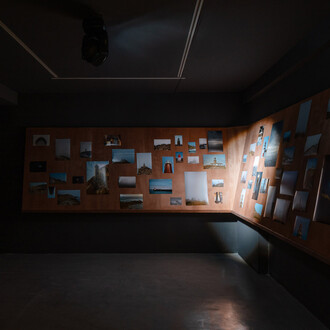The Museum’s 19th-century collection is both the largest and least known of the schools of painting represented in the Museum. It largely derived from the holdings of the Museo de Arte Moderno, which were added to those of the Prado in 1971 and were subsequently displayed in the Casón del Buen Retiro between that date and 1997. In 2007, a selection was displayed in the new galleries of the Museum’s extension with the title The 19th Century in the Prado. Since 2009 the most important works from this group have been hung in the original Villanueva Building.
Twelve galleries present a survey of 19th-century Spanish art through its masterpieces, in addition to a number of examples of European art. The survey begins with a room devoted to Neo-classical art, Goya and Vicente López. While Goya is represented in numerous separate galleries in the Prado, the idea of showing his works in the context of the art of his day allows for an understanding of the first third of the 19th century, to which this gallery is devoted. It features a comprehensive representation of Neo-classical sculpture, the original model for the Villanueva Building and the portraits of the monarchs who founded the Museum, which opened at this period.
Two galleries devoted to Romanticism display works by its leading exponents in Spain, such as Genaro Pérez Villaamil who, along with David Roberts, initiated modern landscape painting in this country. Also to be seen are works by Antonio María Esquivel and Federico Madrazo, both leading portraitists.
History painting was the preeminent genre from the 1850s to the 1880s. Given that the best works were acquired for the Museum from the National Fine Art Exhibitions, the Prado possesses almost all the masterpieces in this genre, displayed in three large galleries. The first is devoted to Eduardo Rosales, who is also represented by paintings in other genres which reveal the importance of his realist approach. The second gallery displays Francisco Pradilla’s masterpiece Doña Juana la Loca, while the third includes that of Antonio Gisbert, The Execution of Torrijos and his Companions. Other core groups - such as realist landscape, represented by numerous works by Carlos de Haes, the Luminist painting of Mariano Fortuny and Martín Rico, and the influence of French painting on Raimundo de Madrazo (represented by Paul Baudry and Jean-Louis-Ernest Meissonier) - precede the final transition towards naturalism, which culminates with Joaquín Sorolla and Aureliano de Beruete.
Given the very large size of this collection (2,690 works), the final room, number 60, shows a rotating display of themes and concepts not normally on display. Since 2009 it has presented seven different exhibitions which have also included drawings, watercolours and prints. This temporary display programme has allowed the Museum to rediscover, restore, study, exhibit and disseminate little-known works by artists, genres and periods of interest and quality, thus fulfilling its core mission.
















